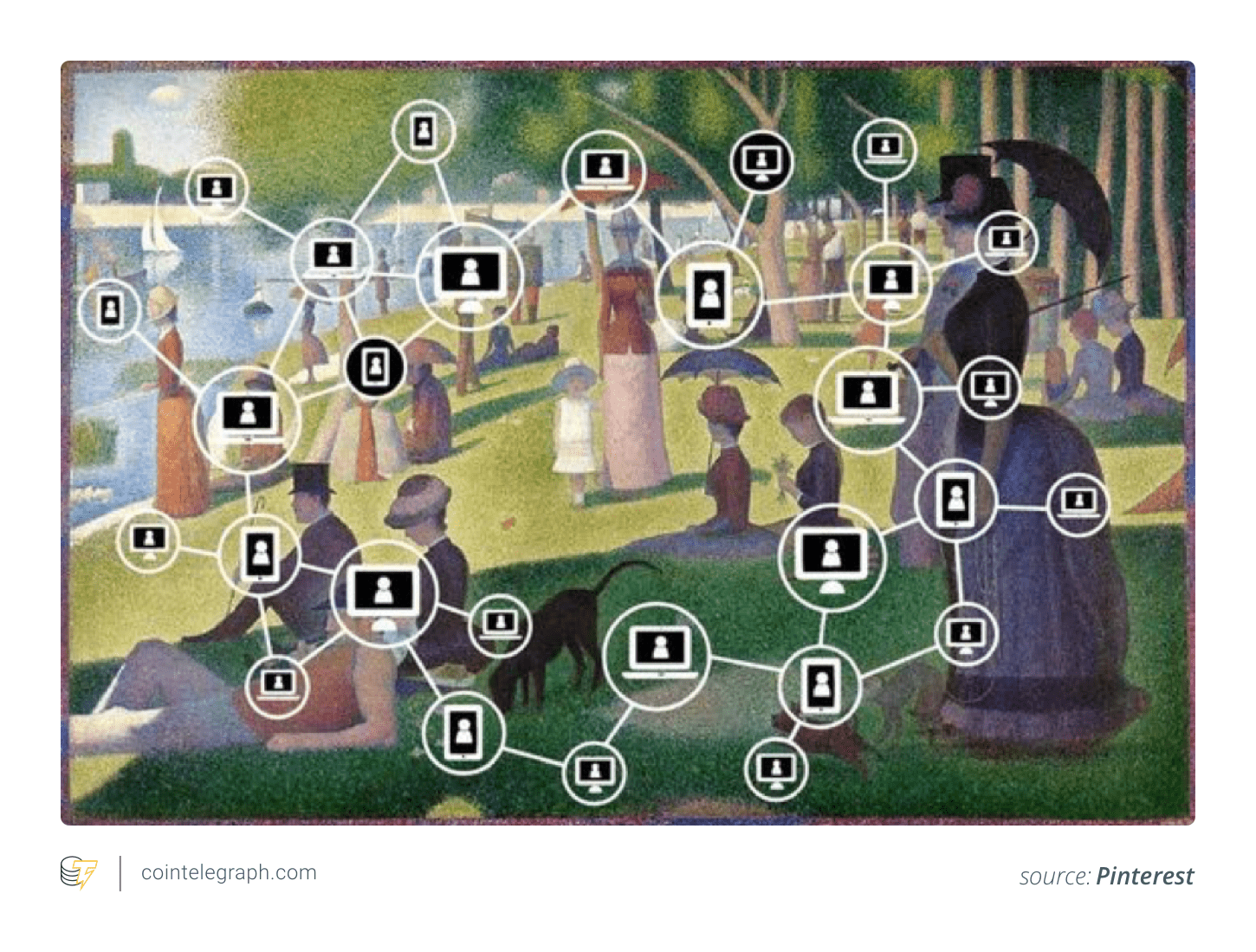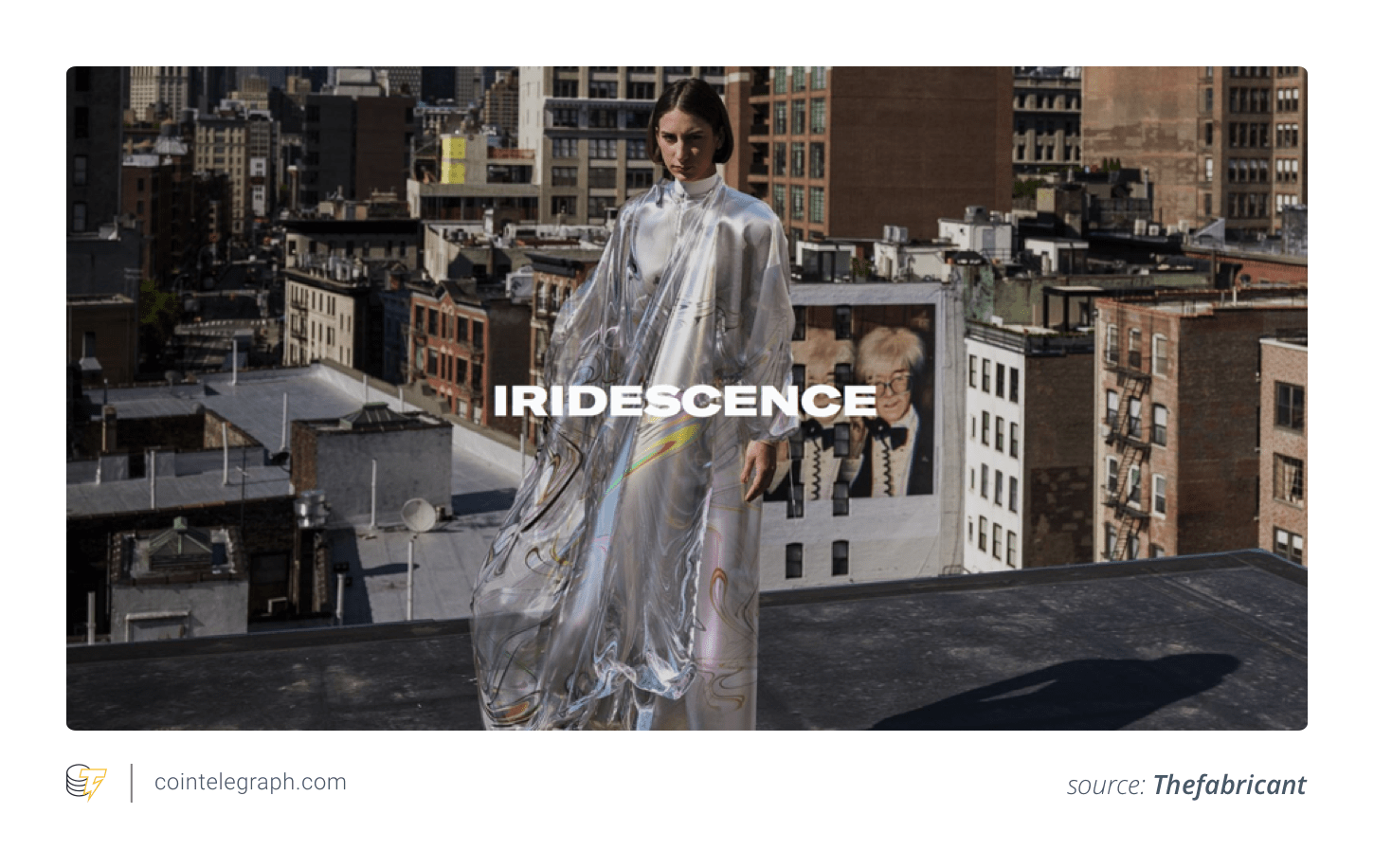
Following its inception, blockchain technology quickly found an application in the art sector, making art objects more accessible while changing methods and approaches to their creation and perception. This gave new opportunities for collectors, art galleries, museums, art brokers and artists.
Brief introduction to the history of blockchain technology in the art world
Projects such as CryptoKitties and CryptoPunks were among the first examples of visual blockchain art. The combination of blockchain technology and art is used not only for registering and collecting data about pieces of art but could also constitute a hub for creative artists around the world.
One such example is the Scarab project. The Scarab Experiment is an association of artists whose focus is on combining different art technologies. Created in 2014, Scarab is a multiuser avatar that uses image processing enabled by artificial intelligence in order to create a single work of art out of thousands of submitted images. To become a participant, one needs to register and submit a piece of art, after which they will receive Scarab tokens in return. The token grants membership in the Scarab community and allows users to vote for objects that will be part of the final work.
In recent years, platforms that offer galleries certification and registration services for collectors and artists have been actively developed. When a work of art is registered on a blockchain platform, its details — such as history and physical characteristics — are recorded and stored on a digital ledger, marked accordingly by time. This way, the art’s data becomes more accessible for verification and detection and cannot be replaced in the future.
Such blockchain platforms for art ensures that both artists and art buyers can benefit. The artist is legally associated with the purchase of works of art and receives the corresponding income.
Another example is Maecenas, an open blockchain platform that democratizes access to fine art and allows investors to purchase pieces of art. The commission is 2%, as opposed to the 20% that is usually charged by auction organizers.
Blockchain in auction houses and online sales
The AllPublicArt platform was launched in 2015 and aims to expand online art sales, as “the online art market is growing at an annual rate of 24% and is expected to reach $9.58 billion by 2020,” according to the insurance company Hiscox Ltd. After registration, each author can publish their works in exchange for APA tokens and independently represent their interests on the market.
In November 2018, The British auction house Christie’s made history with the pilot launch of a blockchain-based encryption and registration service for pieces of art. This was done in New York during the auction of the Barney Ebsworth collection. The auction house partnered with art registration service Artory to prepare a digital certificate for the sale of $300 million worth of art. This art sale included works by Georgia O’Keeffe and Edward Hopper.
What was new in 2019?
Art foundations and blockchain charity
The Foundation for Art and Blockchain was created to disseminate information about art and blockchain technology. Its mission is to support artists who respond to one of the most monumental technologies of the century — blockchain. The foundation was launched in May 2018 by Codex Protocol and Rare Art Labs, in conjunction with Ethereal Summit, and was the auction that sold the world’s most expensive CryptoKitties and other works of blockchain-based art.
The first project supported by the foundation was the Dogethereum Bridge, a public art initiative that promotes collaboration between communities and technology.
Blockchain and fashion

In 2019, the world’s first work of digital haute couture, “Iridescence,” went up for auction for a charity and was sold on a blockchain for $9,500 in support of the Foundation for Art and Blockchain.
The virtual dress was developed by The Fabricant, a Dutch startup digital fashion house. The startup specializes in photorealistic 3D clothing design and animation. The “Iridescence” dress was created from a 2D computer template and then turned into a 3D model using the Techgnosis filter.
The Parisian Bitcoin puzzle mural has been consistently immortalized
Earlier this year, French cryptographer and graffiti artist Pascal Boyart painted a mural and hid $1,000 worth of Bitcoin in it. A month later, local authorities censored the work of art, covering it with gray paint.
The painting depicts the French protest group Le mouvement des Gilets jaunes in a reinterpretation of Eugene Delacroix’s work, “La Liberté guidant le peuple” (Freedom leading the people). It was definitely a political statement. But one cryptocurrency enthusiast and artist strongly against its censorship: Museum of Crypto Art founder and curator Bnoiit.C uses blockchain technology to make crypto art immutable and virtually impossible to censors. Within the span of a week, Bnoiit.C recreated the Parisian Boyart mural in the virtual world of Cryptovoxels, based on Ethereum, and users can even own part of it.
Cryptovoxels is a rather simple idea. It’s a virtual, predominantly blocky world like Minecraft, in which land ownership is tracked and traded using the Ethereum blockchain. Users can buy land, build on it, and then sell it. Each asset in Cryptovoxels can also be sold as an non-fungible token, a unique “digital asset that cannot be duplicated and is registered on the blockchain,” Bnoiit.C told TNW’s Hard Fork. This means that everyone can cross-reference the blockchain to see who owns what in the virtual world. Assets in Cryptovoxels, including land and artwork, can be purchased or sold on the OpenSea crypto-collectible market. The museum serves as a place to showcase and promote the work of artists inspired by cryptography. “Physical art can be censored, just like digital art, for example, close a website. But crypto art can’t. No one can overwrite the blockchain registry,” added Bnoiit.C. For politically motivated art, perhaps blockchain technology is the only way it can stand the test of time and censorship.
Artist Frankie Aguilar is partnering with KnownOrigin to test $1 million worth of art using blockchain technology by the summer of 2020

In 2019, Frankie Aguilar entered into a strategic partnership with digital arts marketplace KnownOrigin to test artwork sales using blockchain technology for the amount of $1 million. This new venture will see the first digital authentication certificate marked on KnownOrigin, replacing the traditional signed paper documents that are commonly used by galleries and artists to confirm ownership of their works.
Aguilar hopes to reach this goal by the summer of 2020. In March 2020, he will hold a large event at his gallery on 9thgalleryarts.com to showcase his Las Vegas-themed pop art.
The artist recently opened a new studio gallery where he produces and sells physical works of art. Aguilar has always been fascinated by the combination of physical and digital art concepts that makes this project unique. The event is a personal art show where a multidisciplinary artist will shoot videos on YouTube with a particular design and artistic approach, covering 10 pieces each week.
Benzin in the exhibition
The virtual group exhibition Pure Form: Geometric Abstraction in Blockchain Art featured work by Hans Benzin.
Curated by Melinda Wang, the exhibition took place in New York from Dec. 3, 2019 to Jan. 31, 2020 at the SuperRare gallery in Cryptovoxels: The 12 exhibited artists explore abstraction in a new way, using the latest technology on a platform that combines art creation, art viewing and fully transparent art commerce. Each work of art is a digital collection — a digital object protected by cryptography and tracked on a blockchain.
Also in 2019, international consulting companies such as Deloitte began providing services in the art market using a blockchain art platform, which was founded in April 2019 in the company’s Russian division.

Conclusions
From cutting-edge blockchain art, asset tokenization and decentralized property rights registries, blockchain technology is driving innovation in the space. Blockchain technology not only enables control of the distribution of digital assets but also records vital information about the origin while making the market more accessible to investors.
Last year was marked by the implementation of projects on collecting and decentralized galleries and the creation of trading platforms. In 2020, we could expect an increase in state funding for large-scale blockchain projects involving the world’s leading museums and galleries.
 cointelegraph.com
cointelegraph.com